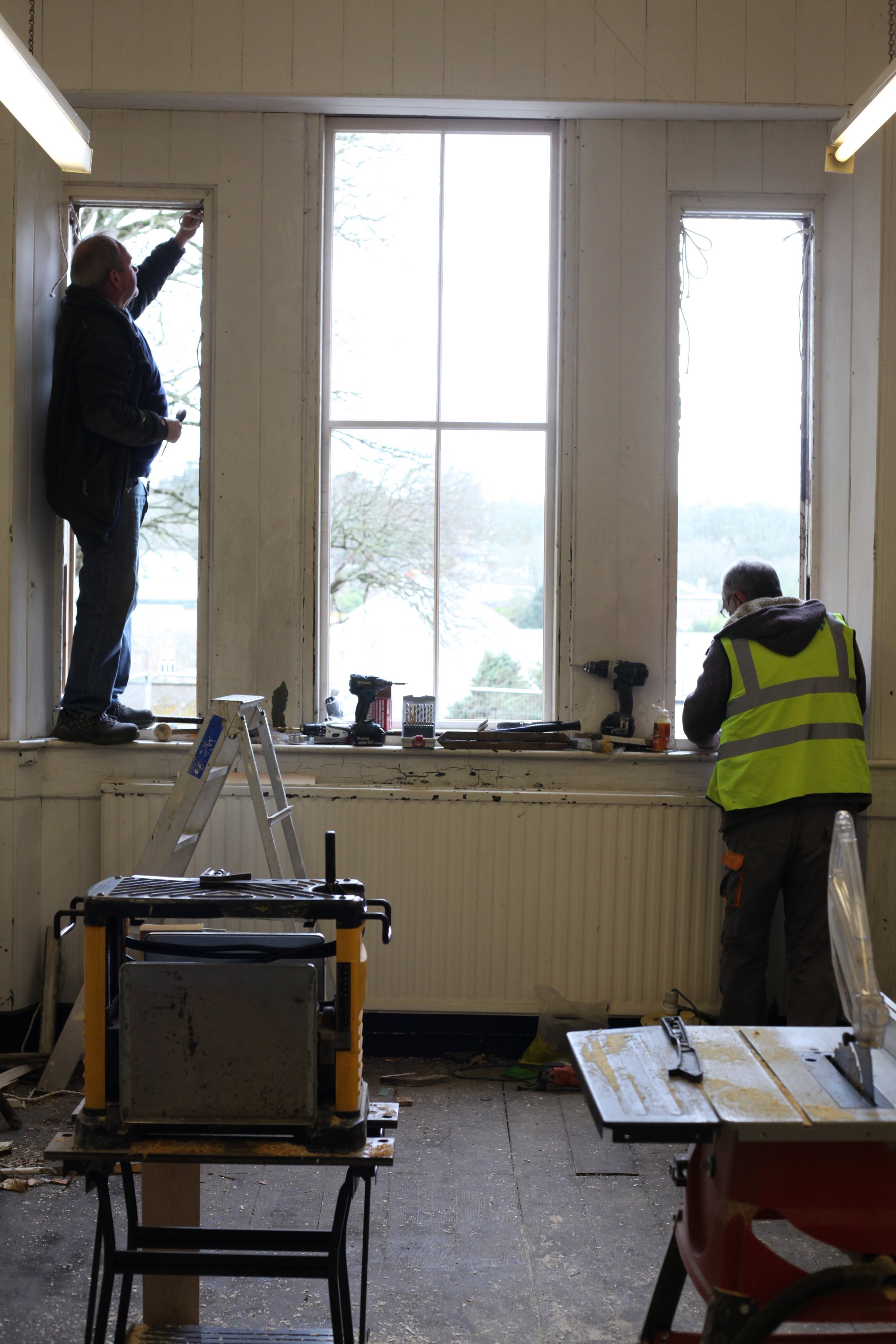
Dreaming Big
JOSH NAWRAS relives the moment he fell head over heels for a crumbling library, and the first steps on a long journey to give it a fresh lease of life
On February 18, 2021, I fell in love with a building.
On that bright winter morning, the former Passmore Edwards Library in Redruth looked magnificent. All late Victorian grandeur and romantic crenellated turrets, sitting solidly on the corner of Clinton Road, looking out over the town.
It had been empty since the Cornish Archive was moved to Kresen Kernow, and the remaining public library was folded into the council buildings just down the road.
Walking around the building that day, it was easy to imagine it still full of life. Children’s paintings still decorated empty rooms. Although there was a sense of decline, the windows and walls were for the most part intact.
It felt like a building that was full of heart, having been a constant in the lives of every resident of Redruth for over 125 years.
It was just waiting for its next occupants to throw open the doors and welcome people back.
It was only a chance search of Cornwall Council’s properties website that had revealed it was on the market: “An imposing former library with many character features, centrally located within Redruth.” A few months earlier, the building had been scheduled for commercial redevelopment — but that shortsighted plan had been beaten back by 4,000 local residents who saw this betrayal of Passmore Edwards’ philanthropic vision of social mobility. Their grassroots organisation would eventually have the building’s community status recognised and its unique architecture celebrated with a Grade II listing.
I tried not to fall in love too fast.
It would be April before we came back. This time Felix Mortimer, the other half of RIFT (the theatre company we ran before The Ladder), and I took a week-long residency in the inspirational Bill’s Attic housed in Krowji.
Ostensibly we were there to think about our first post-pandemic production, an eco-focused reworking of Rime of the Ancient Mariner.
What came out of the week was more than a new play; it was a door opening into a new community. Sue Hill welcomed and enchanted us with tales of theatrical exploration and adventure. Jack Morrison of FEAST spent time connecting dots and linking us up with friends we hadn’t met yet, telling us, of course, these connections were meant to happen.
Flights of fancy were possible if we just met the right people and had the energy to see it through.
We scribbled on walls and Post-its, dreaming of what might be. We tried to identify what Redruth needed, what we needed.
“More than anything, it deserved — needed — to be a space for stories and community again. A plan was forming that tied together our experience of making cultural destinations and building community — of dreaming big.”
But the course of true love and all that...
It would be July before we got back into the building, and by the time we did, the dream seemed further away than ever. Bureaucracy slowed the wheels of progress while vines broke apart paving slabs outside. The library was caged behind Heras fencing, its windows shuttered to stop more of them being broken by the misplaced frustration of bored youths. Inside, the walls crumbled and damp crept in, disuse and disrepair eating at the building from the inside.
But we kept going, and on July 30 we founded Redruth Former Library Community Interest Company. Its purpose was to restore the building and hold it in trust for future generations.
A building like that had to be something long-term, something heartfelt, something of Cornwall but not insular, rooted in heritage but not stuck in the past.
Our network of allies was growing. Supported by the High Street Heritage Action Zone and Redruth Town Council, we began a year-long consultation called Destination Redruth, meeting councillors, residents old and young, businesses, artists — anyone who would talk to us. We gauged their opinions of the town, its cultural scene, and the old library.
On December 1, it finally happened.
The negotiations were over and we had the lease. That day I stepped into the building with a new sense of responsibility. It had deteriorated. Untreated damp, leaks, broken windows and a lack of any maintenance had combined to make it almost unrecognisable. Water dripped from the ceilings and seeped out of the carpets. The smell of mould clung to each room.
This was going to take some work.



